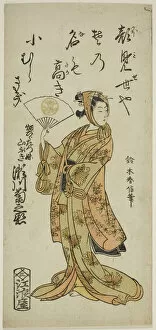Yamabuki Collection
Yamabuki, a name that resonates with elegance and beauty in various forms of art
All Professionally Made to Order for Quick Shipping
Yamabuki, a name that resonates with elegance and beauty in various forms of art. From the vibrant colour woodcuts depicting samurai Wadai Yoshimori, Tomoe Gozen, and Yamabuki in 1848-54 to the captivating portrayal by actor Segawa Kikunojo II in the play "Sh. . 1763, " this character has left an indelible mark on Japanese culture. But it is not just through theatre that Yamabuki captivates hearts. In c. 1818-29, a stunning yellow Japanese rose known as Yamabuki graced woodblock prints with its delicate petals. Its golden hue symbolized joy and prosperity, adding a touch of nature's splendor to artistic creations. Even beyond flora and fauna, Yamabuki finds its place alongside male courtiers crossing rivers on horseback or flowing through serene landscapes like the Jewel River at Ide (ca. 1768) or Tama River at Ide in Yamashiro Province (probably 1766). These scenes capture the essence of tranquility and harmony within nature. In another realm entirely, we encounter courtesan Takigawa from igiya adorned as Mountain Rose - her allure reminiscent of Yamabuki's enchanting presence. Utamaro II masterfully portrays her gracefulness in his artwork titled "Yamabuki Acgiya uchi takigawa. " Whether depicted as actors embodying historical figures or showcased through natural elements and human expressions, there is something captivating about the name "Yamabuki. " It carries an air of mystique that draws us into Japan's rich cultural tapestry while reminding us of the timeless beauty found within art itself.









